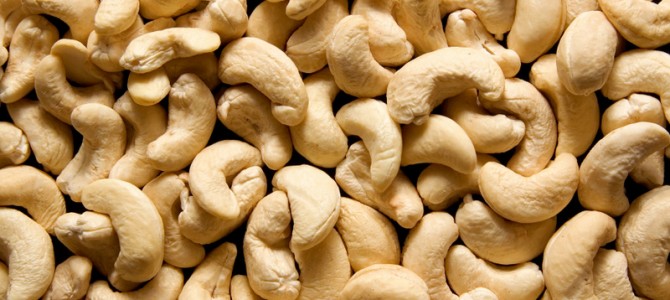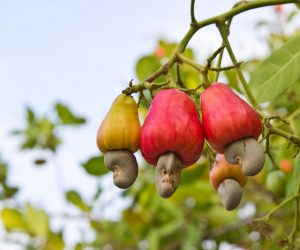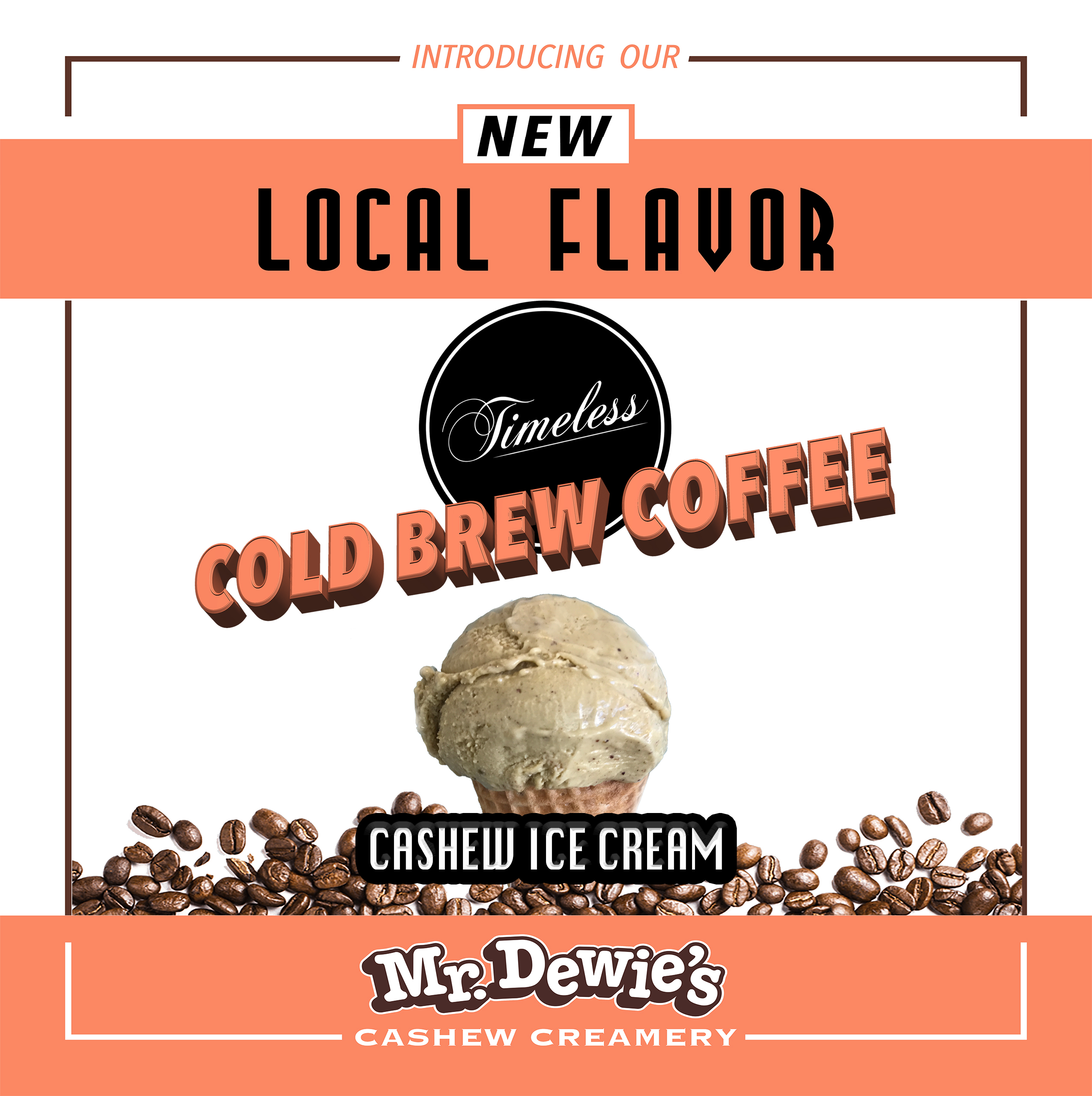There are many things you might not know about the cashew nut and fruit:
- They’re good for you.
- They’re used in a variety of things we use every day.
- They go through a huge process from the plant to your kitchen.
- And this one you’ve probably already figured out…they are very strange looking.

Cashew nuts are widely celebrated for their phenomenal nutritional qualities. They have been known to help:
- diminish migraines
- improve cognitive ability
- lower blood pressure
- protect against heart disease and cancer
- strengthen bones
- protect skin from UV damage
- improve joint flexibility, and much more
Add to that the fact that cashews contain zero cholesterol and primarily “good” fat – oleic acid, which is also found in olive oil – and you have yourself a nut that stands out amongst the rest.
Originally native to northeastern Brazil and introduced to the rest of the world by way of Goa, India by the Portuguese in the 16th century, the cashew tree is now widely grown in tropical regions like India, Vietnam and the Philippines amongst others.
 Cashews can be harvested before they’re ripe, but at that point the toxic shell is also quite corrosive. This means that gloves are required to cut the soft shell with a knife to extract the still-green kernel. The kernel is then soaked in turmeric to get rid of the corrosive material before use.
Cashews can be harvested before they’re ripe, but at that point the toxic shell is also quite corrosive. This means that gloves are required to cut the soft shell with a knife to extract the still-green kernel. The kernel is then soaked in turmeric to get rid of the corrosive material before use.
In fact, the nuts themselves must be roasted with extreme care before packaging because the resultant smoke can be life-threatening.
Why so toxic and corrosive? Well, to ward off animals, of course. In fact, the shell has also been used to develop insecticides, fungicides, varnish and even as an additive to brake fluid in cars.
The cashew nut is also a common food staple in many countries – including as a nut paste in Indian curry dishes such as korma, in Filipino desserts such as torrones de casuy, salted and roasted nuts in Indonesia’s kacang mete, and as powdered nuts with mashed potatoes in the Mozambique specialty bolo polana.
Likewise, the cashew fruit – which in most places is just an accessory to the nut itself – is popularly processed into many different products. It’s been made into a liqueur called feni which is exclusively made in Goa, India, and as a sweetener in Indian curries. It is also the main ingredient in the very popular Brazilian cashew fruit juice. Mostly, though, it’s fed to livestock and can easily stain clothing.
 Mr. Dewie’s uses quality, organic cashews to make our delicious ice cream. We crush the nuts into a fine paste, which is then emulsified with water and the other natural ingredients to make a creamy milk. This milk is then churned in our freezers to make a rich, smooth high protein dessert – 6-8 grams per 4 ounce serving (scoop). Our ice creams are high in protein, and are as rich and creamy as they are because we use a large proportion of cashew paste in every serving. This is in contrast to some other nut milk based ice creams that skimp on the nuts, and instead use gums, oils and emulsifiers to try and achieve these same results. This is a cost cutting step to which we don’t subscribe, and which degrades the quality of the product.
Mr. Dewie’s uses quality, organic cashews to make our delicious ice cream. We crush the nuts into a fine paste, which is then emulsified with water and the other natural ingredients to make a creamy milk. This milk is then churned in our freezers to make a rich, smooth high protein dessert – 6-8 grams per 4 ounce serving (scoop). Our ice creams are high in protein, and are as rich and creamy as they are because we use a large proportion of cashew paste in every serving. This is in contrast to some other nut milk based ice creams that skimp on the nuts, and instead use gums, oils and emulsifiers to try and achieve these same results. This is a cost cutting step to which we don’t subscribe, and which degrades the quality of the product.
Cashews are an awesome form of fat that we use instead of the fat from dairy. Cashews contain high levels of HDLs (high-density lipoprotein, or “good” cholesterol) a type of lipoprotein that carry cholesterol to and from the body’s cells in the blood. (We’ll discuss the types of cholesterol and how they effect us, in a future blog.)
So, in a nutshell, cashews are pretty darn great. We love ‘em by the handful, and we really love ‘em as a creamy dessert, especially a Mr. Dewie’s dessert!
Check out the YouTube video below for more information.




